Strategically important and first of the kind in North India and Jammu and Kashmir, the 592-meter long Basohli Bridge over River Ravi will be the fourth such bridge in the country
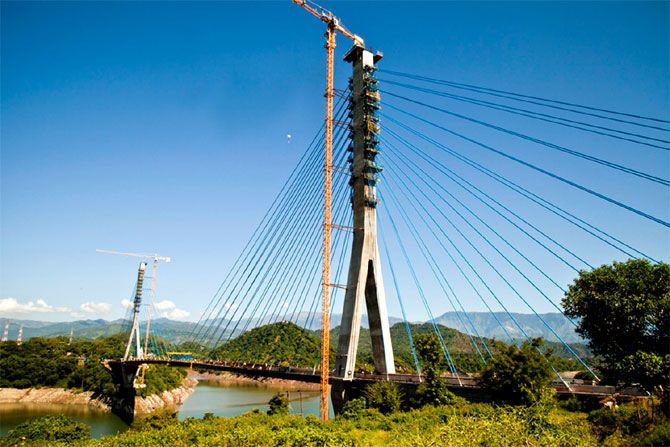
Defence Minister Manohar Parrikar will dedicate the first cable-stayed bridge of North India to the nation on December 24, providing close connectivity between three northern states of Jammu and Kashmir, Himachal Pradesh and Punjab.
Strategically important and first of the kind in North India and Jammu and Kashmir, the 592-meter long Basohli Bridge over River Ravi will be fourth such in the country. Out of 592 m, 350 m span is cable-stayed while the rest is plain bridge.
Currently India has three cable-stayed bridges - Hooghly Bridge at Kolkata, Naini Bridge in Allahabad and Rajiv Gandhi Sea Link in Mumbai.
Work on the maiden cable-stay bridge of the state was started on the persistent demand of people of Basohli where over 22 villages got submerged in water and were evacuated to other places after the construction of Ranjit Sagar Dam. Congress president Sonia Gandhi had set into motion the construction of the bridge by laying the foundation
stone in May 2011. Work on the project started in September 2011.
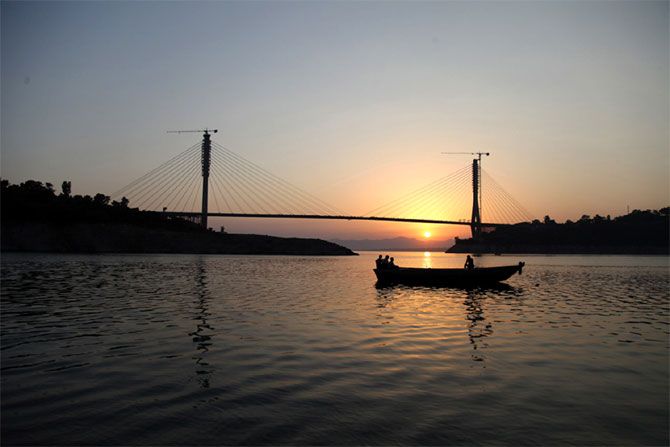
The bridge, which is in the Kathua district of Jammu will provide a second surface link on the Jammu-Pathankote national highway, according to a senior official of the Border Roads Organisation (BRO).
"A typical cable-stayed bridge is a deck with one or two pylons erected above the piers in the middle of the span," a senior officer said adding, "the cables are attached diagonally to the girder to provide additional supports".
"The pylons form the primary load-bearing structure in these types of bridges. Large amounts of compression forces are transferred from the deck to the cables to the pylons and into the foundation," he said.
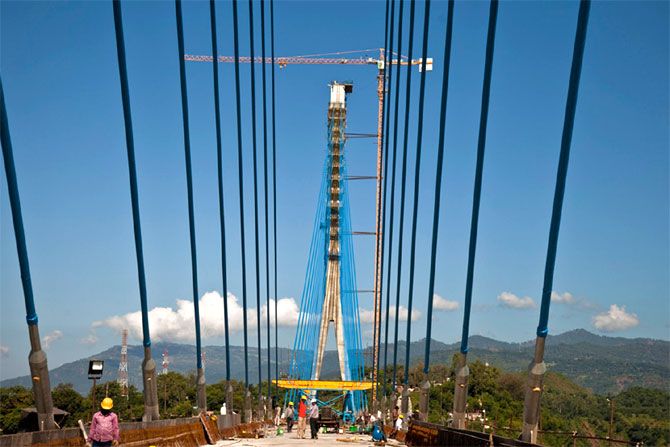
The officer said the cable stayed-bridges have a low centre of gravity, which makes them efficient in resisting earthquakes.
"Cable-stayed bridges provide outstanding architectural appearance due to their small diameter cables and unique overhead structure," he added.
"The peculiarity of this bridge is that the main span and back span are balanced by cable and this bridge has been designed by Canadian Company, Infinity Engineers. Indian Institute of Technology - New Delhi had approved the design of this bridge", he said.
The officer said nearly 300-tonne specially designed cables are needed for this bridge, which are being procured from Japan and Spain.
"The span layout is symmetric (121 meter – 350 meter – 121 meter), with pylons positioned at the top of the river banks.
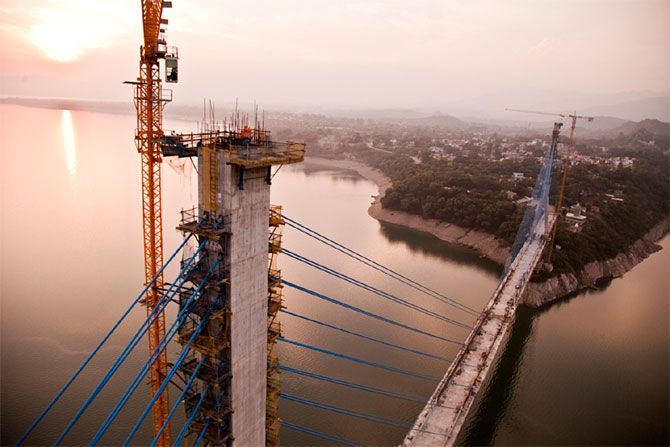
Two inclined cable planes splay outwards from each pylon in a semi-fan configuration, connecting to the superstructure at 14-meter spacing in the main span and 10.3 meters in the side spans," he said.
"Near the abutments, three sets of intermediate piers spaced at just over 20 meters form a secondary support system. When complete, the bridge will accommodate two lanes of traffic as well as two footpaths," he said.
Built at a cost of Rs 145.44 crore, Basohli Bridge is strategically very important for the quick induction of the Army during emergency.
Named Atal Sethu, the bridge will also reduce the distance between Pathankote and Basohli by more than 35 km, saving both time and fuel.
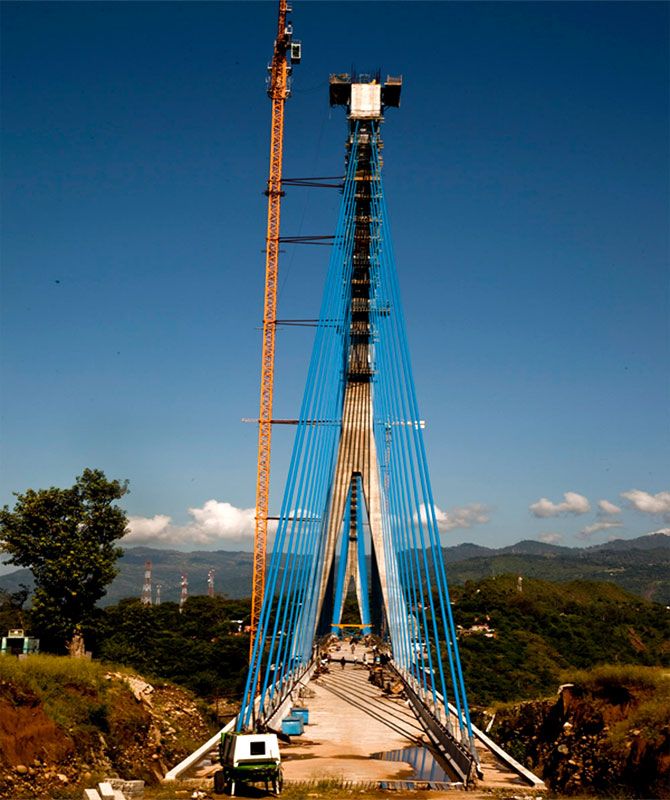
Besides boosting tourism, the bridge is stated to open up whole lot of opportunity for commercial mining of gypsum and lime stone in addition to linking Jammu and Kashmir with Himachal Pradesh, which will also help in developing the adjoining districts like Kathua and Doda.
“Connectivity of an important region like Kashmir should also have an alternate axis due to strategic reason. Therefore the ministry of defence (MOD) had decided to develop the road -- Pathankot – Dhar – Dunera - Basohli – Bani – Bhaderwah – Doda – Anantnag to the National Highway in 1998 as an alternate axis to the Kashmir valley,” the officer said.
The bridge will act as a lifeline for the people of Basohli and Bani tehsils and it will shorten the distance of travel to Punjab and HP to a great extent.
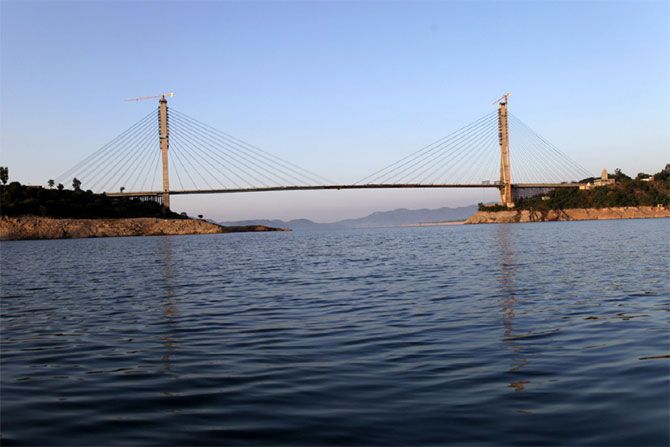
It will prove to be a tremendous boost to the socio-economic development of the region in terms of an increase in tourism and commercial activities.
With the construction of this bridge, it will help in promotion of tourism in the area as a large number of tourists visiting picnic spot of Dalhousie and other sight seeing places in neighbouring HP can also visit the Ranjit Sagar Dam at Basohli provided it is being developed as a tourist spot.
Additional inputs from PTI










